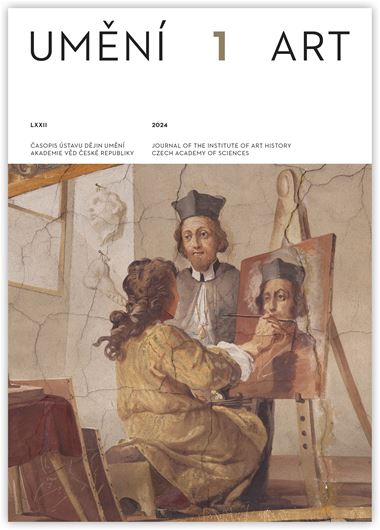Michaela Šeferisová Loudová — Jan Vojtěchovský — Petra Lesniaková
‘ich mit der reparation des figural chori schon verfertiget’: Wall paintings by Jan Jiří Etgens in Rajhrad near Brno
‘ich mit der reparation des figural chori schon verfertiget’: Wall paintings by Jan Jiří Etgens in Rajhrad near Brno
The text presents the results of restoration, material and art-historical research of the wall paintings above the choir loft in the western part of the Church of SS. Peter and Paul in Rajhrad near Brno (The Concert of Angels, The Apotheose of St. Agatha and The Apotheose of St. Florian), created in 1726 by the painter and fresco artist Johann Georg Etgens (1691–1757). The research was mainly aimed at identifying the original technique of the work and the technological processes used. The results of the research showed that the original painting was created using the fresco-secco technique, and corresponds to contemporary practice known from surviving early modern instructions and from recent surveys of wall paintings of the Central European region from the eighteenth century. The elements of the work, including plaster layers, engraved underdrawings, pigments, and the manner of painting, correspond to the printed instructions for mural painters in Andrea Pozzo’s (1642–1709) treatise Perspectiva pictorum atque architectorum (1693–1700), a copy of which Etgens provably had in his possession. Microscopic analysis revealed evidence of the paint layer blending with the fresh plaster [10] and the presence of calcium carbonate deposit under the paint layer, known as lime-skin. This confirms that the fresco technique was used not only on freshly applied intonaco but also on drying or completely dried plaster. [11] The discovery of a rare sinopia, which can almost certainly be attributed to Etgens, is unique. Simultaneously, a study was conducted on secondary interventions in the original painting, which had an unusually high number of later overpaintings. These included Etgens’s original corrections made shortly after the paintings were completed, as a new interpretation of the surviving letter from the painter to his commissioner [Appendix] has shown. Therefore, an important aspect of the research was to distinguish secondary interventions, using technical photography among other methods. This non-invasive imaging technique, commonly used to examine hanging or panel paintings or polychromies, was used in this case to survey a Baroque wall painting.
Author's email:
loudova@phil.muni.cz / vaclav.hajek@fhs.cuni.cz / petra.lesniakova@upce.cz
DOI: HTTPS://DOI.ORG/10.54759/ART-2024-0103
Full-text in the Digital Library of the Czech Academy of Sciences:
https://kramerius.lib.cas.cz/uuid/uuid:9234035e-37a7-434c-aed7-4924bab13652
< back

